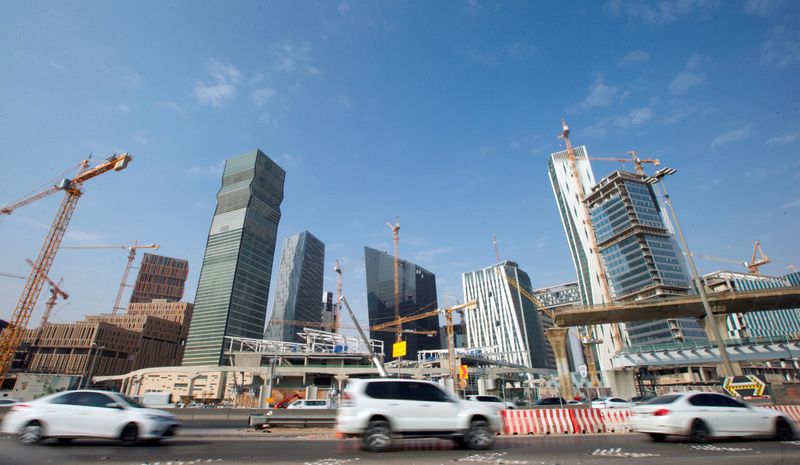RIYADH (Reuters) -Saudi Arabia's real gross domestic product (GDP) decreased 1.8% year-on-year in the first quarter, flash estimates by the government's statistical authority showed on Wednesday, as a decline in oil activities continued to hurt overall growth.
The kingdom's GDP had shrunk 3.7% in the fourth quarter of 2023, as cuts to oil production and lower crude prices weighed on the economy.
Saudi Arabia, the world's largest oil exporter, is pumping around 9 million barrels per day (bpd), well below its around 12 million bpd capacity after it cut production as part of an agreement with OPEC and other oil producers.
Saudi Arabia needs hundreds of billions of dollars to fund its plan to diversify its economy away from oil, known as Vision 2030, which aims to expand the private sector and boost the non-oil economy.
With a projected budget deficit of 79 billion riyals, Saudi Arabia has announced delays to some of its multiple-billion-dollar mega projects.
"There are challenges... we don't have ego, we will change course, we will adjust, we will extend some of the projects, we will downscale some of the projects, we will accelerate some of the projects," Saudi Arabia' Finance Minister Mohammed Al Jadaan said on Sunday, speaking at the World Economic Forum meeting in Riyadh.
Brent crude has averaged around $83.50 so far in 2024, while Saudi Arabia needs oil at $96.2 to balance its 2024 budget, the IMF forecasts.
The kingdom has already tapped debt markets for $12 billion so far this year to help plug the projected deficit in 2024 as it boosts spending to bolster the domestic economy.
Saudi Arabia's over $700 billion sovereign wealth fund, the Public Investment Fund (PIF), raised $5 billion through the sale of a triple-tranche conventional bond in January and $3.5 billion from a sukuk deal in October, and plans to further tap the debt market this year. State oil giant Aramco (TADAWUL:2222) has announced plans to issue a bond this year.
Oil activities were down 10.6% in the first quarter compared with the previous year, estimates from the General Authority for Statistics showed, while non-oil GDP grew 2.8% year-on-year and government activities increased 2%.
On a quarterly basis, seasonally adjusted growth was up 1.3% from the previous quarter, driven by a 2.4% increase in oil activities and a 0.5% growth in non-oil activities, although government activities decreased by 1%.

The kingdom's economy contracted 0.9% in 2023, the data showed, pulled lower by the oil sector, while non-oil activities grew by 4.6% last year.
This marks a sharp contrast to 2022, when Saudi Arabia was the G20 group's best performing economy, boosted by an oil price windfall, which allowed it to achieve growth of 8.7% and its first fiscal surplus in almost a decade.